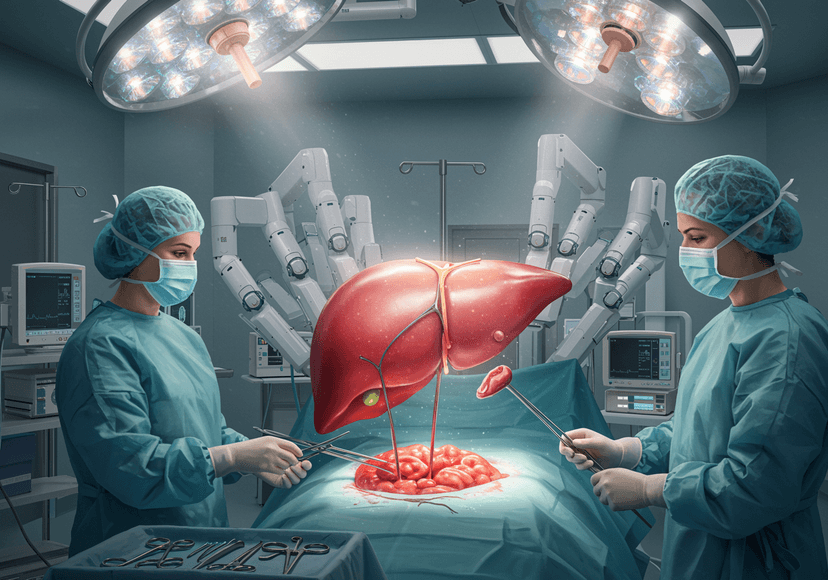
Skull Base Tumor Surgery UAE: Techniques and Outcomes
06 Nov, 2023
 Healthtrip
HealthtripSkull base tumors are a complex and challenging group of tumors that originate within or near the base of the skull. These tumors can be benign or malignant, and their location often poses a significant challenge for surgical intervention. In the United Arab Emirates (UAE), where healthcare standards and technology have rapidly evolved in recent years, the techniques and outcomes of skull base tumor surgery have seen remarkable advancements. This blog will explore the various techniques used in skull base tumor surgery in the UAE and the outcomes achieved through these cutting-edge procedures.
Understanding Skull Base Tumors
Skull base tumors are diverse in their origin and characteristics. They can be broadly categorized into anterior, middle, and posterior skull base tumors. The location and nature of the tumor play a crucial role in determining the appropriate surgical approach and the expected outcomes.
Most popular procedures in India
Types of Skull Base Tumors
Skull base tumors encompass a wide range of tumor types, and their classification is typically based on their anatomical location. The three primary regions of the skull base are:
1. Anterior Skull Base
Tumors in the anterior skull base are often found in the frontal and ethmoid sinuses. Common examples include:
Wellness Treatments
Give yourself the time to relax
Lowest Prices Guaranteed!

Lowest Prices Guaranteed!
- Meningiomas: These tumors arise from the meninges, the protective layers of the brain and spinal cord.
- Esthesioneuroblastomas: These rare tumors originate from the olfactory nerve, affecting the sense of smell.
2. Middle Skull Base
Middle skull base tumors involve structures like the pituitary gland, optic nerves, and cavernous sinus. Notable middle skull base tumors include:
- Pituitary Adenomas: These noncancerous tumors develop in the pituitary gland and can impact hormone regulation.
- Craniopharyngiomas: These benign tumors are derived from embryonic tissue and often affect the hypothalamus and nearby structures.
3. Posterior Skull Base
Tumors in the posterior skull base are situated at the back of the head and may involve critical structures like the brainstem and cranial nerves. Prominent examples are:
- Vestibular Schwannomas: These benign tumors typically affect the vestibular nerve and can lead to hearing and balance problems.
- Chordomas: These slow-growing but locally aggressive tumors develop from remnants of the notochord and often affect the spine's base.
Clinical Significance
Skull base tumors can be associated with various symptoms, depending on their location and size. Common signs and symptoms include:
- Headaches: Tumors can lead to persistent and severe headaches.
- Visual Disturbances: Tumors near the optic nerves or pituitary gland can cause visual problems.
- Hearing Loss and Balance Issues: Tumors affecting the ear can lead to hearing loss and balance problems.
- Facial Pain and Numbness: Tumors impacting the trigeminal nerve may cause facial pain and numbness.
- Hormonal Imbalances: Pituitary tumors can disrupt hormone regulation, leading to a range of symptoms.
Diagnosis of Skull Base Tumors
The accurate and timely diagnosis of skull base tumors is essential for determining the appropriate treatment strategy and providing the best possible outcomes for patients. Diagnosing these complex lesions involves a combination of clinical assessments, imaging studies, and, in some cases, tissue sampling. In this section, we will explore the key aspects of diagnosing skull base tumors.
Clinical Evaluation
A thorough clinical evaluation by a healthcare provider is the initial step in diagnosing skull base tumors. This evaluation includes:
1. Medical History
The patient's medical history is reviewed to identify any risk factors, prior medical conditions, or symptoms that may suggest the presence of a skull base tumor.
2. Physical Examination
A comprehensive physical examination is conducted to assess neurological function and identify any neurological deficits or abnormalities that may be associated with the tumor.
Imaging Studies
Imaging studies play a pivotal role in identifying and characterizing skull base tumors. The most commonly used imaging modalities include:
1. Magnetic Resonance Imaging (MRI)
MRI provides detailed images of the soft tissues of the brain and skull base. It can accurately depict the location, size, and extension of the tumor, as well as its relationship to surrounding structures.
2. Computed Tomography (CT) Scan
CT scans are used to visualize the bone structures of the skull and can help in detecting bony abnormalities or erosion caused by tumors. Contrast-enhanced CT scans can provide additional information about vascularization and tumor density.
3. Angiography
In some cases, cerebral angiography may be performed to assess the tumor's blood supply and vascular anatomy, which is crucial for surgical planning.
Tissue Biopsy and Pathological Assessment
In certain situations, a tissue biopsy may be required to confirm the tumor type and assess its malignancy. This is particularly relevant when the imaging studies cannot definitively determine the tumor's nature. Biopsy methods can include:
1. Fine Needle Aspiration (FNA)
FNA involves using a thin needle to extract a small sample of tissue from the tumor. This sample is then analyzed under a microscope to determine the type of cells present.
2. Surgical Biopsy
A surgical biopsy may be necessary to obtain a larger tissue sample for a more comprehensive pathological assessment. This procedure is typically performed when the tumor's location allows for safe access.
Laboratory Tests
Laboratory tests, such as blood tests, may be conducted to assess hormone levels in cases where the tumor affects the endocrine system, as is often the case with pituitary adenomas.
Differential Diagnosis
Given the varied presentation of skull base tumors, it is important to consider a wide range of differential diagnoses, which may include other intracranial lesions, vascular malformations, or infectious processes. A multidisciplinary approach involving neurosurgeons, otolaryngologists, radiologists, and pathologists is crucial for accurate diagnosis.
Cost and Considerations
Skull base tumor surgery in the United Arab Emirates (UAE) is a complex and specialized medical procedure that requires a thorough understanding of the associated costs and considerations. It's essential for patients and their families to be well-informed about the financial aspects and factors influencing the decision-making process. In this section, we will discuss the cost and various considerations associated with skull base tumor surgery in the UAE.
Cost of Skull Base Tumor Surgery
The cost of skull base tumor surgery in the UAE can vary significantly based on several factors, including:
1. Type and Severity of the Tumor
The complexity and severity of the tumor play a significant role in determining the cost. More extensive and complicated surgeries may require a longer hospital stay, a larger surgical team, and additional resources, leading to higher costs.
2. Surgical Approach
The type of surgery required to address the tumor can vary. Minimally invasive procedures, such as endoscopic endonasal surgery, may be more cost-effective compared to traditional craniotomy, which involves a more extensive surgical process.
3. Surgeon's Experience
The experience and reputation of the surgeon performing the procedure can influence the cost. Highly experienced surgeons may charge higher fees for their services.
4. Hospital and Facilities
The choice of the healthcare facility can also impact the overall cost. Different hospitals may have varying pricing structures, and some may offer more advanced technology and a higher level of specialized care, which can affect the cost.
5. Additional Medical and Postoperative Services
Cost considerations should include post-operative care, follow-up appointments, and potential rehabilitation or physical therapy. These services may add to the overall expenses.
Considerations for Skull Base Tumor Surgery
Before undergoing skull base tumor surgery in the UAE, it is important to take into account various considerations:
1. Risks and Potential Complications
Skull base tumor surgery is a complex procedure with potential risks, including infection, bleeding, nerve damage, and stroke. Understanding these risks is crucial for making an informed decision.
2. Recovery Time
The recovery time following skull base tumor surgery can vary widely, depending on the type of surgery and the individual patient's health. It's important to plan for the post-operative recovery period and understand any limitations during this time.
3. Long-term Effects
Consider the potential long-term effects of the surgery, which may include facial numbness, weakness, or other neurological changes. These factors can impact the patient's quality of life.
4. Post-operative Care and Rehabilitation
Recovery may necessitate ongoing medical care, rehabilitation, and follow-up appointments. Understanding these requirements is crucial for a comprehensive approach to the surgery.
5. Insurance Coverage
Check with your health insurance provider to understand what aspects of the surgery are covered and what costs you may need to cover personally. Understanding your insurance coverage can help manage financial considerations.
6. Choice of Healthcare Facility
Consider the reputation, track record, and expertise of the chosen healthcare facility. Access to advanced technologies and the experience of the medical team can significantly influence the outcome of the surgery.
7. Informed Decision-Making
Clear communication with the medical team, a thorough understanding of the treatment plan, and informed decision-making are essential when considering skull base tumor surgery in the UAE. Seek multiple opinions and research your options to make an informed choice.
Advancements in Skull Base Tumor Surgery
Over the years, advancements in medical technology and surgical techniques have significantly improved the outcomes of skull base tumor surgery. Here are some noteworthy developments in the field:
1. Minimally Invasive Approaches
Endoscopic endonasal surgery, as mentioned earlier, has gained popularity due to its minimally invasive nature. These techniques result in shorter hospital stays, quicker recovery times, and reduced post-operative discomfort for patients.
2. Intraoperative Imaging
Intraoperative imaging tools, such as intraoperative MRI and CT scans, enable surgeons to visualize the tumor and surrounding structures in real-time. This enhances precision and ensures the most comprehensive tumor removal while minimizing damage to healthy tissue.
3. Navigation Systems
Surgical navigation systems provide surgeons with real-time 3D maps of the skull base, allowing for precise localization and navigation during surgery. This technology aids in avoiding critical structures and optimizing tumor removal.
4. Neuromonitoring
Intraoperative neuromonitoring is a crucial aspect of skull base tumor surgery. It helps in preserving neural function by monitoring the integrity of cranial nerves and brain structures during the procedure. Any potential issues can be identified and addressed promptly.
5. Multidisciplinary Approach
Collaboration between different medical specialties, including neurosurgeons, otolaryngologists, radiation oncologists, and radiologists, is integral to the successful management of skull base tumors. This approach ensures a comprehensive evaluation of the patient's condition and the development of a tailored treatment plan.
Outcomes and Challenges
While significant progress has been made in the field of skull base tumor surgery, several challenges and opportunities for further improvement persist:
1. Tumor Classification and Personalized Treatment
Developing a more nuanced understanding of skull base tumors at the molecular level can lead to more accurate classification and personalized treatment plans. Targeted therapies based on the genetic profile of the tumor may offer better outcomes for patients, particularly those with malignant or recurrent tumors.
2. Reducing Surgical Morbidity
Surgical morbidity remains a concern in skull base tumor surgery due to the delicate and complex nature of the procedures. Future research should focus on techniques and technologies that minimize complications and enhance patient safety.
3. Non-invasive Imaging and Monitoring
Advances in non-invasive imaging and monitoring techniques can aid in earlier detection of skull base tumors and more accurate tracking of treatment response. These innovations can help clinicians make informed decisions about the timing and nature of interventions.
4. Patient-Centered Care
Emphasizing patient-centered care is critical in skull base tumor surgery. This includes addressing patients' psychological and emotional needs, providing comprehensive pre-operative and post-operative support, and ensuring clear communication about treatment options and expected outcomes.
5. Collaborative Research
Collaborative research efforts that bring together experts from various medical fields can lead to breakthroughs in skull base tumor management. Sharing data and knowledge is essential for advancing our understanding and improving treatment strategies.
Patient Testimonials
To gain deeper insights into the experiences of patients who have undergone skull base tumor surgery in the UAE, we present a selection of patient testimonials that highlight the effectiveness and compassionate care provided by the medical professionals in the region:
1. Maryam
"I was terrified when I was diagnosed with a skull base tumor, but the team of specialists in the UAE guided me through the entire process. The minimally invasive approach they used allowed me to recover quickly, and I'm now living a healthy life."
2. Ahmed
"My journey with a pituitary tumor was challenging, but the endoscopic endonasal surgery performed in the UAE completely changed my life. I'm back to work and feeling better than ever."
3. Layla
"I couldn't have asked for better care during my craniotomy for a complex skull base tumor. The surgeons in the UAE were highly skilled, and the aftercare was exceptional."
These personal stories serve as powerful testaments to the remarkable skill, technology, and dedication that define skull base tumor surgery in the UAE. Patients like Maryam, Ahmed, and Layla have experienced life-altering transformations, thanks to the expertise and compassionate care they received during their treatment journeys.
In Closing
Skull base tumor surgery in the UAE is marked by its commitment to excellence, advanced techniques, and a patient-centered approach. The collaboration among experts, innovative technology, and a focus on the individual patient's needs have led to impressive outcomes in the treatment of these challenging conditions. With continued research and a dedication to improving the lives of patients, the future of skull base tumor surgery in the UAE looks promising and bright. Patients in the UAE and around the world can be confident in seeking the best possible care for these complex conditions.
Related Blogs

Healthtrip's Advanced Liver Transplant Technology
Discover Healthtrip's state-of-the-art liver transplant facilities, boasting advanced technology and

Healthtrip's Guide to IVF Clinics and Costs in UAE
Discover top IVF clinics in the UAE and understand treatment

Healthtrip's Guide to IVF Clinics and Costs in UAE
Discover top IVF clinics in the UAE and understand treatment

Revolutionizing Dialysis Treatment in the UAE
Mediclinic Al Twar Dialysis Center offers advanced dialysis treatment options

Discover Exceptional Healthcare at Mediclinic Parkview Hospital
Get premium healthcare services at Mediclinic Parkview Hospital, a state-of-the-art

Unparalleled Medical Care at Corniche Hospital in UAE
Get access to top-notch medical facilities and expertise at Corniche










